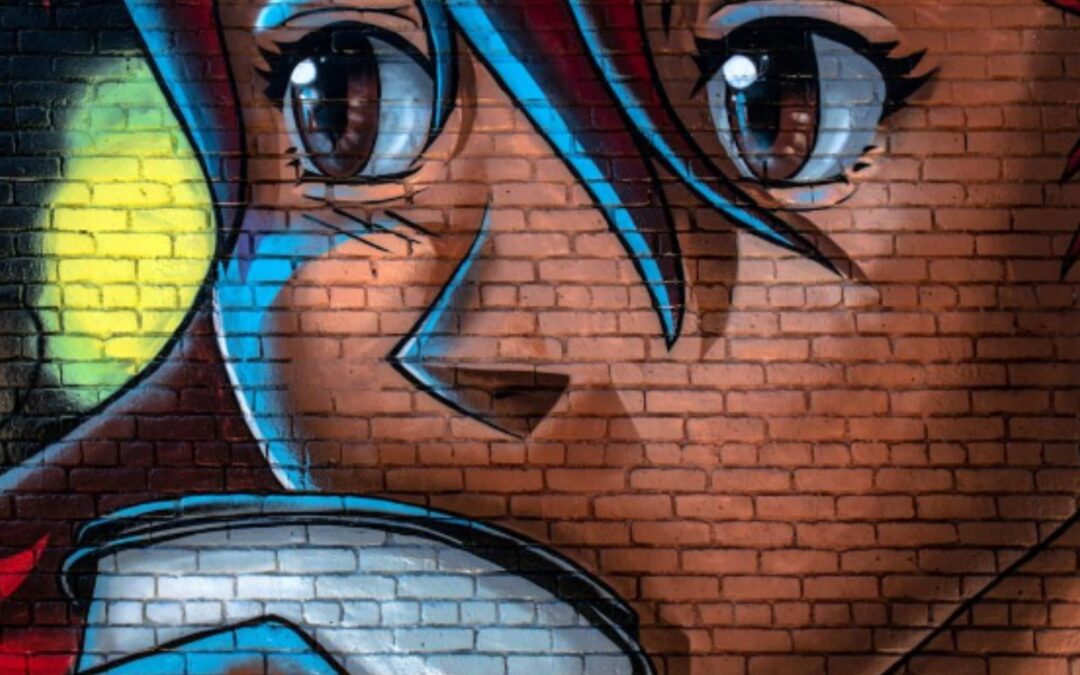Few global art forms have captured audiences’ imaginations and hearts, such as Japanese manga and anime. Their unique storytelling techniques, stunning artwork, and intricate plots managed to transcend geographical and cultural boundaries to influence numerous domains. The journey from a type of art that could only be understood and appreciated inside the country to a global phenomenon shows incredible evolution potential. And that’s exactly what we’re exploring in this article — the progress from the ethereal brush strokes of ukiyo-e prints to the dynamic heroes of today’s digital masterpieces.
Is There Any Difference Between Anime and Manga?
If you’re not familiar with these two Japanese art forms, it’s important to grasp the differences between anime and manga, as they are distinct forms of storytelling with their own unique mediums of expression. Anime encompasses Japanese animated shows, films, and web series renowned for their colorful graphics and fantastical themes. Manga, on the other hand, consists of Japanese comic books and graphic novels, characterized by their detailed black-and-white artwork, which are traditionally read from right to left. Both anime and manga are popular forms of Japanese entertainment, each offering a different experience for the audience.
Anime and manga offer different experiences for viewers and readers. Anime can explore storylines in-depth, but adaptations can diverge from the source material. Manga has more consistent pacing and can directly interpret the author’s vision with a more detailed narrative and character development.
Anime has had a greater impact on global audiences due to the accessibility and appeal of animated content, while manga faces barriers such as translation and distribution, affecting its global reach. However, digital publication has recently made manga more accessible to international readers.
Short History of Anime
Anime has a rich history that began after World War II. Initially inspired by Western animation, anime developed its distinct style with the release of “Astro Boy” in 1963. As television became popular, anime expanded its reach with shows like “GeGeGe no Kitaro” and “Doraemon” that entertained viewers while reflecting societal changes.
The 1970s and 1980s marked significant milestones with the emergence of the mecha genre, epitomized by “Gundam.” This genre redefined the portrayal of robots and battles, influencing entertainment and technological innovation. This period, often called the golden age of anime, saw a proliferation of genres, including sports and magical girl series, further diversifying anime’s appeal and setting the foundation for global fandom.

The 1990s witnessed the international expansion of anime, with “Dragon Ball” and “Sailor Moon” becoming household names, transcending cultural barriers and highlighting themes of heroism, friendship, and empowerment. This era also saw the groundbreaking “Neon Genesis Evangelion,” which explored deeper philosophical questions, signaling anime’s capacity to engage with complex narratives and themes.
Today, anime continues to evolve, with franchises like “Pokémon” achieving unprecedented global popularity, demonstrating the medium’s ability to adapt and thrive. Titles like Attack on Titan, Death Note, My Hero Academie, or Hunter X Hunter continue to take this genre to new audiences across the globe.
Popular Themes in Anime and Manga
Anime and manga often explore themes ranging from the complexities of human emotions and relationships to philosophical and existential questions. They tackle issues like the struggle between good and evil, the journey of self-discovery, and the importance of friendship and loyalty. Many series also touch on societal issues, technology’s impact, and the conflict between tradition and modernity. These themes resonate with audiences globally, making anime and manga a versatile and engaging medium for storytelling.
Taboo themes such as infidelity, gambling addiction, and organized crime are not shied away from in anime. Kakegurui is an excellent example in this direction, as it puts the issue of gambling addiction in the spotlight. This anime can benefit players who enjoy Japanese online casinos, providing insight into what not to do. This topic also shows the close relationship between anime and the society. These productions couldn’t be popular without tackling subjects relevant to their time.
Final Words
As we observe the remarkable journey of manga and anime, from their humble beginnings to becoming global cultural phenomena, it becomes clear that this dynamic art form will continue to evolve. Manga and anime have always explored themes such as love, courage, and human nature’s complexities, reflecting Japan’s changing societal norms and technological advancements.

Indeed, manga and anime will persist in pushing the boundaries of storytelling, exploring new topics that deeply resonate with audiences in Japan and worldwide. This enduring adaptability and relevance assure us that the future of manga and anime is bright and boundless, promising even more innovative and captivating narratives for future generations.

